
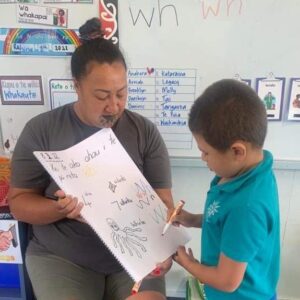


In 2022, 50 years after the Equal Pay Act was passed into law, kaiārahi i te reo won the first pay equity settlement for a Māori workforce in New Zealand history. Overall, the average pay increase is 79 percent, paid to a group that’s made up mainly of wāhine Māori. Āwhina Kihi tells us what being a kaiārahi means and why the pay increase is such a big deal.
When tamariki first come into my classroom, some are so unsure of themselves. They don’t know who they are or where they come from. They are very whakamā.
They are often tamariki who’ve had no pre-education. They haven’t been to kōhanga, they haven’t been to pre-school, and they’ve never been to kindy. So, our first challenge is getting the adults in their life to bring them to school every day.
Our kura, Malfroy School in Rotorua, is a kura auraki which means it’s a mainstream Pākehā primary school. And we have a rumaki unit, which is total immersion Māori, within the school.
The housing crisis has hit Rotorua hard, so we have tamariki who are very displaced.
We have almost a whole street, right from the city centre running up to Whakarewarewa, which is emergency housing.
So, our tamariki may have nowhere permanent to live, no vehicles in their whānau, and hardly any food. They have very little hope – and some of them are only five or six years old.
From the whānau point of view, there’s the housing crisis, the cost of living, and a pandemic to cope with, so the adults just stay home. Then the kids feel like they have to stay at home as well. So, a really big part of my job as a kaiārahi is connecting with whānau and understanding their situation.
I tell the parents: “Here’s my number. If you need me to pick up the tamariki, ring me. I’ll take them to school and drop them off after kura.” Even though our school has a van, sometimes our parents and whānau are too whakamā to ask for help.
We’re part of the kai in schools programme, so we have lunch provided at school, and we have fruit, and we do a breakfast programme. The tamariki know they can come to school from 8.30am every morning and have breakfast. Then, when the bell goes, they’ll go to class with a full puku, ready to learn.
And whoever the adults are in our children’s lives – whether they’re parents, aunties, uncles, kuia or koroua – we have an open door. They know that they can come in anytime to our class and see how their tamaiti is doing.
I tell them that we need these tamariki to be “the best them that they can be”. And for that to happen, it’s important for them to be at kura every single day. And then I tell them: “You can come in, too, and show your face, so that your kids can see us together.”
Those little things mean a lot to a tamaiti. Then when the tamariki go home and talk about “Whaea Āwhi”, the whānau know exactly who they mean.
It might take anywhere up to a term for the connection to happen. But our whānau start to realise that placing their tamariki with a kaiātahi i te reo in a rumaki classroom unit is a very different thing. It doesn’t take long before they want to be part of what’s happening at kura. Together, we can work on the education of the tamariki.
It’s also very important to me to be the person who gives these tamariki access to te ao Māori. I want them to know that they don’t have to do anything or be any particular way to have that access. They belong.
Their whānau will often say to me: “We missed out on our Māori side growing up.” Or “We don’t know anything about our taha Māori.” Most of the time, all they know about their whakapapa is their last name. And so, I’ll try to reconnect them back home, so they can share in their children’s learning journey.
I prefer to teach our tamariki through our own kōrero, through our reo Māori and te ao haka – waiata, mōteatea, pūrākau, karakia. And the kids love it.
What are they getting from te ao Māori? Everything. What aren’t they getting from te ao Māori? You just can’t compare it.
So many other Indigenous cultures have lost everything. We’ve come so close to losing everything here, too. I have a massive responsibility to make sure that never happens again.
I’m nearly 40 now and I’ve taught two generations. So, I have adults coming back with their kids now who say: “Whaea, I wouldn’t be the person I am today if you didn’t help me reconnect to my taha Māori.”
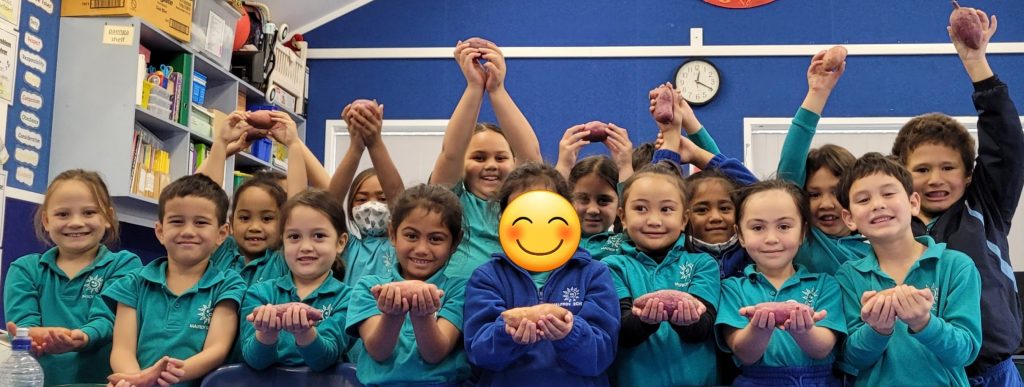
They’re doing amazing things – being lawyers and teachers and giving back to their pā. And being on their marae committees and contributing to their hapū and iwi.
Had they not come into my classroom, they may have been put into a Pākehā class. And I’ve seen what can happen to some of our tamariki Māori that go through kura auraki. Some end up very disruptive and go down a wrong path of drugs and stealing. They’re running in the streets, because they didn’t find a sense of belonging in those other classrooms. He ao anō tō te ao Pākehā.
We live in a colonised world which will never truly understand our needs, our wants, what we deserve. It will never grasp the real value and importance of our culture. But if we can get these displaced kids coming under our rumaki classes and bilingual classes which have kaiako Māori, kaiāwhina and kaiārahi i te reo, we can connect with their whānau and get them coming to class.
Māori are natural-born educators and learners. As soon as my kids start bickering or whatever, I’m like: “Right, let’s go outside, go have a run around.” We go and sit under the rākau.
It’s holistic learning for us. My kids should be surrounded by the environment. I ask them where’s the sun? What’s the moon doing? Lie down on the grass. What are the clouds telling you? What can we count? What can we learn from what we see? That’s our way of teaching and learning.
Te ao Māori has been sidelined for a long time. Women have been disadvantaged for a long time. The majority of kaiārahi are women. And when you put wāhine Māori together, it’s a double whammy in terms of us being way down the pay scale.
So, the pay equity offer for kāiarahi i te reo is life-changing. It’s hugely significant for wāhine Māori. Massive. It will absolutely help to get more of us doing this work. There’s only 70 or so of us around the motu right now who are formally employed in these roles.
There’re a lot of things that are overdue. But I think this is a great start, a beautiful beginning.
It will never reflect the full extent of what we really do. We are the kids’ other mother. Their aunty. Often, we provide them with the things we know they don’t have – school shoes, socks, jerseys, school bags or stationery – because we know how important it is for them to have something of their own. These things help them feel part of the class and the kura.
I try to instil those same values in them. As hard as it may be for them, as much as they may be struggling or feeling like they have nothing, or have nothing to offer, there’s always something they can give to someone. Even if it’s just helping their new classmate find the wharepaku, or showing them how to sit on the mat. That’s something they can give.
We have 19 tamariki in our class, so it’s a lot to carry. But I don’t feel like it’s a weight. It drives me. I empty my kete in order to be able to fill it up again. And so, I empty it on the daily. I put everything I have into my kids, and then I can refill.
I was very lucky growing up. My whole world was te ao Māori at home. Then, when I went to kura, it was a struggle, because we lived in a predominantly Pākehā community and so I went to Pākehā schools right the way through.
But my family was there to support me all the way. My kuia and whānau whānui made sure that I had access to all of the best things – that I had my reo, that I was in the accelerated class, that I had opportunities and the best of both worlds. My kuia was determined that no one would make her moko a statistic.
Since I can remember, I’ve always said I want to be just like my kuia. And that’s actually what I’m doing as a kaiārahi i te reo.
For some of the kids in my class, their opportunities start with me. I know that. They’ve been shunted around, had choices taken off them, through no fault of their own. They deserve better. And that’s what drives me to continue to do the mahi that I do.
I want them to know they can be anything they want to be – a teacher, a lawyer, a journalist. Or they can work at a supermarket. So long as they’re happy and they understand that they are important and they have a place in the world.
Last Saturday night, we had a big celebration at Te Takinga marae. We had special activities for the tamariki – waka making, mahi toi and making lanterns. Lots of the kids who turned up were the tamariki that I teach at Malfroy.
Had I not told them at school: “Make sure you tell your whānau. Tell your aunty and uncle to bring you down to the pā. It’s all free. They don’t need to do anything, just come and enjoy” – they would not have come.
But they did come. And their whānau came. We had a concert and we had hāngi and we had a light show. We all celebrated Matariki together. Because that’s what we’re here to do. We’re here to pass on our mātauranga Māori, and to lift each other up.
As told to Connie Buchanan. This piece was originally published by E-Tangata and is republished here with permission.
Āwhina Kihi (Ngāti Awa, Ngāti Pikiao, Ngāti Whakaue, Ngāti Naho) is kaiārahi i te reo at Malfroy School in Rotorua.
Related Posts
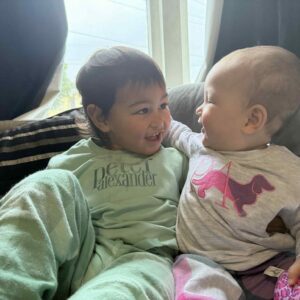
Jasmine Taankink (Ngā Mahanga-a-Tairi) is a second language speaker of te reo Māori committed to the intergenerational transmission of te reo in her whānau and community. She shares with us her hopes for her three moko.

While headlines continue to debate the state of education, and political conversations turn increasingly towards blame and constraint, the reality is that our teachers are holding together a system under pressure with the strength of their care, professionalism and deep commitment to every child who walks through the door.
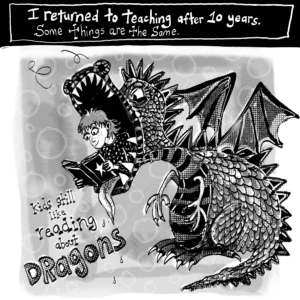
After a decade away from the whiteboard, educator and comic artist Indira Neville has returned to teaching – and she’s drawing about it. In this comic series, Indira shares a glimpse into her days at school, capturing what’s changed, what’s stayed the same and what she never saw coming.
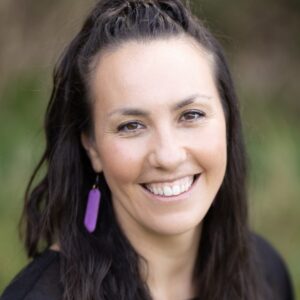
It’s often said that a nation’s budget reflects its values. If that’s true, then Budget 2025 tells us undeniably that children, especially our youngest tamariki, are not a priority.